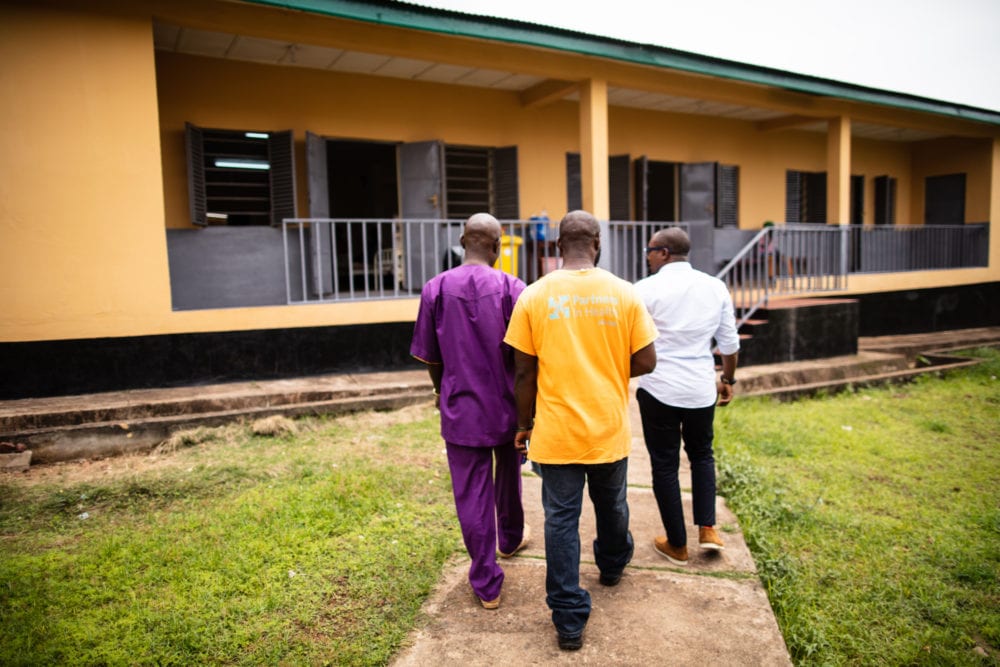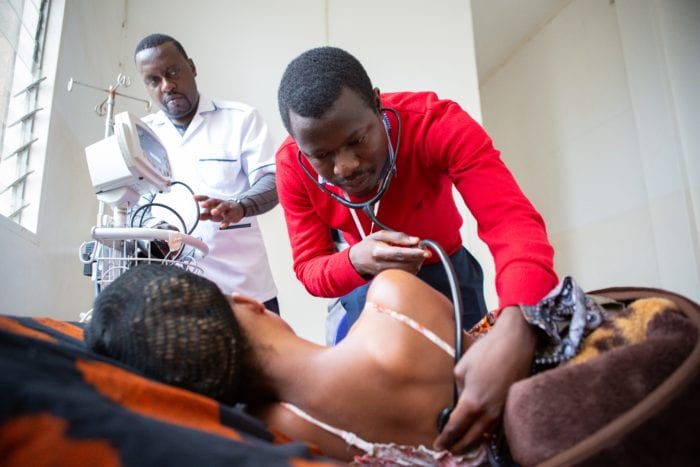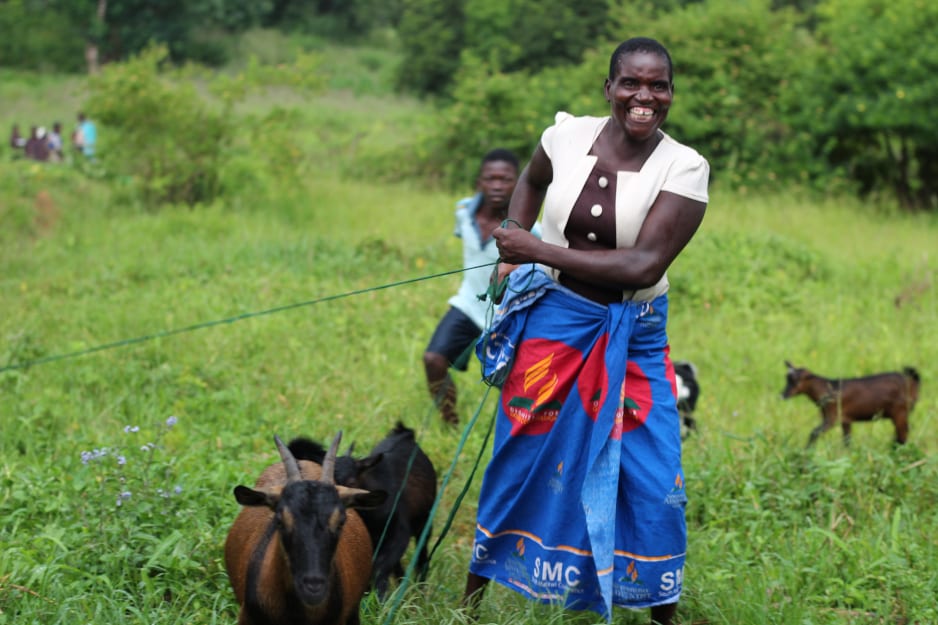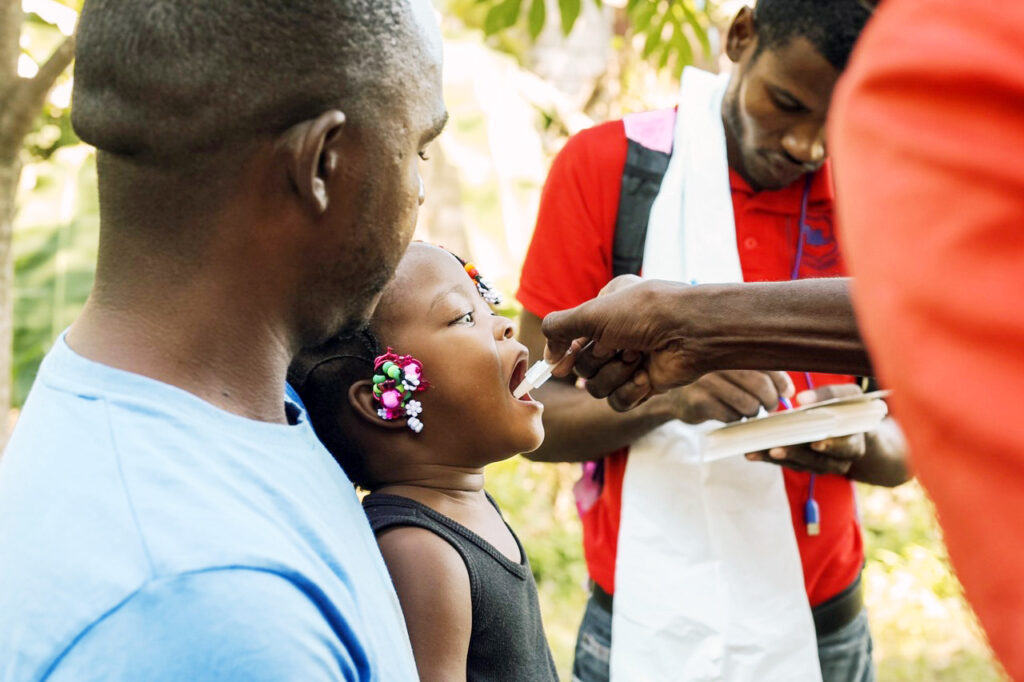The Zika Virus in Haiti


Photo: Cecille Joan Avila / Partners In Health
Dr. Louise Ivers, PIH’s senior health and policy advisor and infectious disease expert, is working with PIH staff in Haiti to help prevent infections from the Zika virus.
Partners In Health serves 32,000 pregnant women in Haiti every year, which puts it front and center in the debate over how to deal with the Zika virus and its carrier mosquitoes, the Aedes aegypti and Aedes albopictus. After seeing thousands of cases, experts are investigating a link between babies born with small heads, a condition called microcephaly, and Zika contracted during the mothers’ pregnancies.
Many questions remain about Zika and its current impact on the Haitian population. Until more answers surface, PIH staff strive to find the best solutions for women, men, and children who may be adversely affected by the virus.
We spoke with Dr. Louise Ivers, PIH’s senior health and policy advisor and an infectious disease expert, about the mosquito’s resiliency, efforts to control it in Haiti, and how PIH is working to prevent Zika infections and treat those who might be suffering from complications.
What about these mosquitoes makes them unique?
These mosquitoes are different than the mosquito that transmits malaria, so they need a different approach to control. They have a very resilient life cycle. A. albopictus’s eggs, for example, can exist for quite some time even when it’s dry. They’ll just wait until the next rain or water is available and then hatch out. Other mosquitoes typically replicate near bodies of natural water, but these mosquitoes are found in very small collections of man-made water reservoirs near homes. So it could be the water collection bucket people use in their homes. It could be a small collection of water on a banana leaf. It could be water in old, disused tires from vehicles that are sitting around.
So you can imagine urban slum areas where there’s a lot of garbage that can collect water. Even in rural places, this can also be the place where they thrive. It’s difficult to eradicate all of these areas from someone’s home.
How is the Zika virus related to other water issues in Haiti?
There’s an irony here in that we’ve been battling this huge cholera epidemic, which has been related to the lack of water security. People don’t have access to water. They deal with this by collecting buckets of water and leaving them in their houses. These same buckets put them at risk of dengue, Zika, and chikungunya fever because they are locations that these mosquitoes like to use. We have to explain to people how the mosquito can thrive in these water buckets, that they have to cover them, and that they have to examine the water to make sure there’s no eggs or larvae in their homes.
Is it fair to say poor people are disproportionately affected by these mosquitoes?
Nobody’s immune to these mosquitoes, but the poor are disproportionately affected by the consequences of the mosquitoes. It’s not just the poor rural or urban areas that have a problem. But if you have a home that has air conditioning, then the mosquitoes are much less likely to thrive there because the temperature is cold for them. And if you have a home that has screens on the windows, that really reduces the likelihood that mosquitoes are going to get in in the first place, lay their eggs, and reproduce. Again, like with many other neglected diseases, we have the situation where the people with means or resources are less likely to suffer consequences because they can protect themselves better at home.
Also, these mosquitoes do not particularly bite at one time of day or another. They bite both indoors and outdoors. If you’re working for a bank or you’re working in an office with air conditioning and screens, you’re less likely to get bitten. The same isn’t true if you have to work outside or in the fields.
What is generally being done to prevent infection and control the mosquito?
The mainstay of trying to protect against these diseases has been trying to avoid getting mosquito bites. That’s easier for some than others. Wearing long sleeves is just so impractical for a place like Haiti, where it’s over 100 degrees for many months of the year and people work outside and most commerce happens outside.
People are also trying to reduce the number of mosquitoes. One way is through the use of improved environmental sanitation, such as draining standing water, trying to eliminate places where there is standing water, and educating people about what to avoid in homes and their yards to reduce the likelihood that the mosquito can breed there. Those are small, initial steps.
There are some efforts under way to make biological alterations to the bug with the thought that it can be eradicated. There was an experiment done in a part of Brazil where they released genetically modified mosquitoes in an effort to control the epidemic of Zika there. Then we talk about pesticides, and many are concerned about pesticides contaminating the environment and having other unintended consequences. Well, here’s another dramatic activity that could really impact this disease and other diseases but have environmental consequences that I certainly don’t fully understand or know.
Is there a link between pesticide use and microcephaly?
I think everyone is always suspicious of putting harmful chemicals into our environment, and rightly so. The causes of microcephaly are still being investigated, in Brazil in particular. There’s a lot of research that has to be done to understand that.
Part of the issue is that Zika is not really affecting Europeans and Americans, at least not yet. So the amount of money going into research to answer these questions has not been that high. We should know what the link is. We should investigate the causes. We should have the resources to respond to this type of issue with good clinical care for the women and babies involved, and also the resources to respond to emerging infectious diseases with proper research. That means putting resources into diseases that are not necessarily affecting the U.S. and Europe.
It was the same with Ebola. There were not that many resources available for researching Ebola virus until it suddenly became a risk to the U.S. and Europe. This lack of foresight needs to change as a matter of equity and as a matter of common sense.
What is PIH doing to battle Zika in Haiti and prevent infection among staff and patients?
PIH in Haiti (Zanmi Lasante) is working with officials from the Ministry of Health and representatives from the Pan American Health Organization, the World Bank, and several international nongovernmental organizations to create an action plan to address Zika in Haiti. That plan includes six main target areas, including: epidemiologic surveillance, social communication and mobilization, family planning, vector-borne disease control, clinical management, and monitoring and evaluation. Each partner will contribute in their area of expertise.
The only real thing we can do at the moment is try to protect people from mosquito bites by educating them, providing them with mosquito repellent, and working with the government—which will have to include discussions with communities—to answer questions about mass larvicide or insecticide spraying.
There are many, many unknowns, and it’s still a work in progress in terms of what we can do.
Women of child-bearing age, in Haiti and in other countries where Zika thrives, have been told to avoid pregnancy. How sound is that advice?
The issue is: How can women prevent themselves from getting pregnant in a country where access to family planning is still very limited? Women want to get family planning, but they don’t have access to it. Public facilities are under-resourced. There’s not enough staff. There’s not enough supplies. Maternal mortality is already too high in Haiti, and the Zika epidemic is highlighting the lack of access to health care for women.
The Haiti team has been trying to educate and pass on all the information that’s available about the virus, and that would include encouraging women to not get pregnant yet while the information is still not clear. One goal we have, now more than ever, is that every woman in Haiti has access to family planning if she wants it.
How long is the virus present within the body, and do we know if this infection has lasting effects beyond that period?
The virus itself is present for three to seven days, we believe. We can test for the actual virus with a polymerase chain reaction (PCR) test, or we test for antibodies to the virus. Antibodies persist far longer than the virus itself. So you might have antibodies forever. The antibodies are what probably provide you with immunity if you’re exposed again.
We really don’t know a whole lot yet about how long people have the virus in their body, because nobody has been testing them every day for a week to see, and there have not been many research studies yet. Many of the infections are completely asymptomatic, so it’s only afterward when they find antibodies that they realize the women had been infected.
Do you know of any children born in Haiti with microcephaly that might be linked to Zika?
No, we don’t know yet. At least, there’s no official report.
When children are born with microcephaly, what types of services do they require?
Children with microcephaly might have a range of problems from none to very many. The key point is that children need to have individualized care, an evaluation of their abilities and their development, and interventions such as physical therapy or special support to respond to whatever those challenges might be—just like any child with a developmental delay or disability.
Maybe some of the children wouldn’t need anything, and that would be great. And maybe some of them will need a lot of support. A lot of that remains to be determined. The reality is, as of today, that level of individualized care is typically not available in Haiti.
At University Hospital in Mirebalais, we have advanced health care for pregnant women even in normal circumstances. We have neonatal care, pediatricians, obstetricians, and we have antenatal ultrasound. And because we are community-based in terms of our activities, we are planning to set up community-based care for any children who are born with microcephaly—but this will require resources.
There’s growing evidence that Zika infections may also cause Guillain-Barré, which comes with another set of serious complications, right?
This is a neurological problem that is thought to be due to an inflammatory response that affects your neurons. Say you respond to the virus, but the same antibodies affect your neurons.
There’s definitely been an increased number of cases of Guillain-Barré in the countries where Zika has been found. Our own team in Haiti has diagnosed a number of cases. They suspect that it’s also related to the Zika virus, but again we don’t have a lot of resources to do scientific research on this. We would like to have more and be able to do more.
Can the syndrome be cured, or is it a lifelong condition?
It can sometimes be a life-threatening complication. In the U.S., the treatment is largely to support the patient through it. Sometimes they can have paralysis of their breathing. Sometimes they need to be intubated. Sometimes it’s less severe. But mostly the care is supportive, which would be a challenge in Haiti, where there’s not very much access to critical care.
Related Links:
Need to Know: Zika Virus
__________
From pih.org



